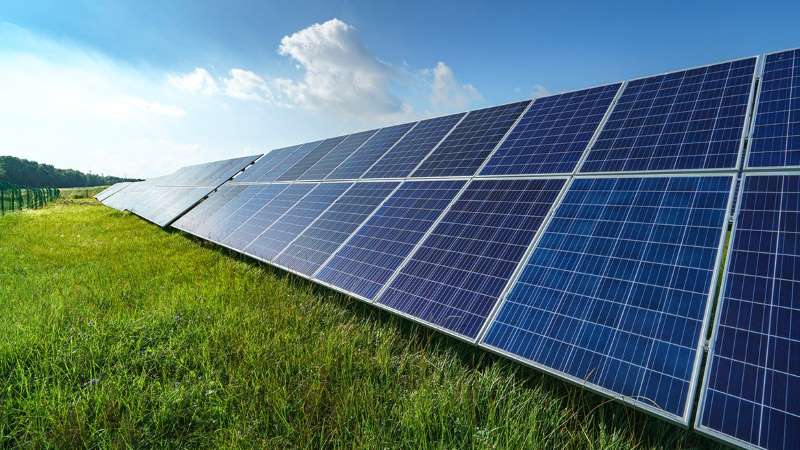Solar Paneling Your Home: The Options for Financing
Solar paneling your home can be a great way to save money on your energy bills and help the environment. However, the cost of solar panels can be prohibitive for some homeowners. That’s why it’s important to explore your solar financing options. In this article, we will discuss the different ways you can finance solar panel installation for your home.
What are solar panels?
Solar panels are devices that convert sunlight into electricity. They are made up of solar cells, which absorb sunlight and create an electrical current. Solar panels can be used to power homes, businesses, and public buildings.
Solar energy has a number of benefits for both homeowners and the environment. Solar energy is a renewable resource, which means it will never run out. Solar energy is also silent, clean, and emissions-free. In addition, solar energy can help you save money on your energy bills in the long run.
What is solar financing?
Solar financing is the process of obtaining funding for solar panel installation. Solar financing can be used to cover the cost of materials, labor, and other associated costs. There are a variety of solar financing options available, which we outline below.
Why would I need solar financing?
There are several reasons why you might need solar financing. Perhaps you cannot afford the upfront cost of solar panel installation. Or, you may want to take advantage of government incentives that are available for solar energy projects. Solar financing can also help you reduce your carbon footprint and save money on your energy bills in the long term.
What are the typical costs of solar installations?
The cost of solar panel installation can vary depending on a number of factors, including the size of your home, the type of solar panels you choose, and your geographical location. In general, solar panel installation costs range from $15,000 to $30,000. However, there are a variety of solar financing options available that can help offset these costs.
What are some solar financing options?
There are a variety of solar financing options available for homeowners interested in solar panel installation. Some common solar financing options include:
- Solar leases: A solar lease is an agreement between a homeowner and a solar company. The solar company agrees to install and maintain the solar panels on the homeowner’s property. The homeowner agrees to pay a monthly fee for the use of the solar panels.
- Solar power purchase agreements: A solar power purchase agreement (PPA) is an agreement between a homeowner and a solar company. The solar company agrees to install and maintain the solar panels on the homeowner’s property. The homeowner agrees to pay for the electricity generated by the solar panels at a fixed rate.
- Solar loans: A solar loan is a loan that is used to finance the cost of solar panel installation. Solar loans can be obtained from banks, credit unions, and other financial institutions.
- Government incentives: There are a variety of government incentives available for homeowners interested in installing solar panels. These incentives can help offset the cost of installation and make solar energy more affordable.

Industry Best Program
up to 15 terms, rates from 6.99%
and max loan of $100,000

Streamlined Process
instant decisions, electronic docs, quick and easy loan process

No Prepayment Penalties
pay off part or all of your loan early with NO penalty fees
Solar Services
Solar Panels
PowerPay finances any type of solar panel including monocrystalline, polycrystalline, and thin-film panel plus installation
Roofing
We finance the solar panel, installation and any roofing materials, labor and cost.
Batteries
Wall batteries, universal charging plugs, generators can be financed for up to 25 years
What are the benefits of financing with PowerPay?
PowerPay is a solar financing company that offers a variety of solar financing options for homeowners. Some of the benefits of financing with PowerPay include:
- Soft credit pull: PowerPay will not perform a hard credit pull when you apply for solar financing. This means your credit score will not be impacted.
- No prepayment penalties: PowerPay does not charge prepayment penalties. This means you can pay off your solar loan at any time without penalty.
- No deferred interest: PowerPay does not charge deferred interest. This means you will not be charged interest on your solar loan if you pay it off early.
- Low APR: PowerPay offers competitive solar financing rates.
- Customer service: PowerPay has a team of experts who are available to answer your questions and concerns.
How do I apply for solar financing with PowerPay?
Applying for solar financing with PowerPay is easy. You can apply online or in person at our office. All you need to do is fill out some basic information and upload a treatment plan. Once your application is approved, you will sign your loan documents and be on your way towards clean energy!
Once you are approved for solar financing, your loan will be funded for the cost of your solar panel installation. You will begin making monthly payments to PowerPay 30 days after your solar panel installation is complete. Your monthly payment will be based on the loan term chosen and there will be no prepayment penalties. So your loan can be paid off early at no additional cost.

Save Time.

Save Money.

Be Happy!
Reviews
Solar Financing FAQs
How does solar power work?
A home solar system is made up of components that all work together to convert the power of sunlight into usable energy for your lights, appliances and devices. Specifically, all the various aspects of solar systems including the solar panels, inverters, electric service panels, third party meters, and utility meters all work together to provide energy.
1. Solar panels: Solar panels are made of photovoltaic cells that convert sunlight to direct current electricity (DC electricity). As long as the sun ray’s are making contact with your roof, your panels are converting solar radiation into DC electricity. Even when it’s cloudy, you can still expect your panels to produce 10% to 25% of their normal output. But your electricity isn’t ready just yet. You’ll need an inverter to get the kind of power you need to turn the lights on.
2. Inverter: The inverter takes the DC electricity produced by your solar panels and turns it into alternating current electricity (AC electricity). It’s typically installed on an exterior wall of your house, or in the garage.
3. Main electric service panel: Solar electricity from your inverter flows to the electrical panel, and then into to your home where it powers your lights and appliances. If your panels generate more solar energy than you use, the excess power will flow to the utility grid. Even better? You might even earn energy credits from your local utility for the power you send.
4. Third Party meter
Your meter monitors your system production and sends the information to us through a wireless signal. Most newer system tracks your energy production 24/7, it will automatically alert your monitoring service if it detects problems or irregularities.
5. Utility meter: When your system produces more than you need, the excess energy is sold back to your utility and credited to your monthly electric bill. When you need more energy than your solar system can produce, your home will automatically pull the energy from your utility. Your utility meter measures how much energy comes from and goes to the grid.
How do solar tax credits work?
The availability of solar tax credits is dependent on the region you live in and the solar product that you invested in. The federal solar tax credit gives you a dollar-for-dollar reduction against your federal income tax. The 26% tax credit applies as long as the home solar system is installed by December 31, 2022. Starting in 2023, the value of the tax credit will step down to 22%. After 2023, the tax credit for residential solar ends. State or utility tax incentives vary depending on the region you reside in. To learn more about policies and incentives in your region, check out the Database of State Incentives for Renewables & Efficiency website.
How to finance solar projects?
There are a few ways to finance solar projects including paying for the project out of pocket, using a credit card or taking out a loan to finance the project. Each option has its own benefits and drawbacks. Paying for the project out of pocket is the simplest way to finance it since there are no interest rates or monthly payments. However, if you can’t afford to pay out of pocket a loan may offer more benefits than a credit card for lower interest rates, and long term repayment options available.
What is a solar loan?
While solar loans may not be for everyone, they can make the associated costs and installation of solar panels and other solar initiatives more affordable by spreading out the cost over time while giving you predictable monthly payments. They also give you an opportunity to own your solar panels outright rather than leasing them like most other types of systems if it proves more of a value and savings to your utility bill to own your solar power outright.
How do solar loans work?
Solar loans are just like any other home or home improvement loan. Usually, the solar loaning company provides capital to finance the equipment purchase and installation. The money for equipment purchases is often provided in chunks over time, which is convenient for your cash flow if you might otherwise have to save up before buying. Once the project is funded, monthly installments are made to pay the loan off at more affordable payment rates.
Are solar loans tax deductible?
The Solar Energy Industries Association (SEIA) does not currently have a list of solar loans that are tax deductible. But, it’s worth noting that the federal government offers a variety of incentives for homeowners who install solar panels, including a 30% tax credit off the cost of the system. There may be state and local incentives available as well, so it’s worth checking with your local government or utility to see what programs are available in your area. And, always consult with a tax professional to see if you’re eligible for any deductions or credits related to your solar installation.
PowerPay Solar Energy Financing & Loan Options FAQ
Visit our PowerPay borrower FAQ for the most up-to-date details about PowerPay solar loan offerings and how the process for applying and funding works.

